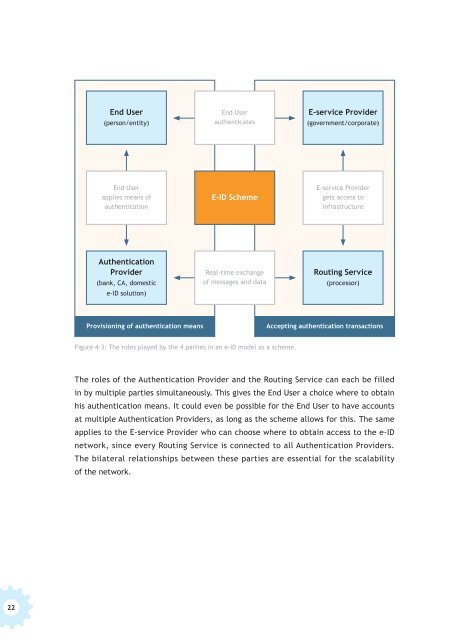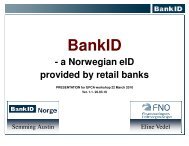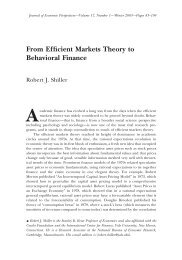A Network Approach to E-identification
A Network Approach to E-identification
A Network Approach to E-identification
- No tags were found...
You also want an ePaper? Increase the reach of your titles
YUMPU automatically turns print PDFs into web optimized ePapers that Google loves.
End User<br />
(person/entity)<br />
End User<br />
authenticates<br />
E-service Provider<br />
(government/corporate)<br />
End User<br />
applies means of<br />
authentication<br />
E-ID Scheme<br />
E-service Provider<br />
gets access <strong>to</strong><br />
infrastructure<br />
Authentication<br />
Provider<br />
(bank, CA, domestic<br />
e-ID solution)<br />
Real-time exchange<br />
of messages and data<br />
Routing Service<br />
(processor)<br />
Provisioning of authentication means<br />
Accepting authentication transactions<br />
Figure 4-3: The roles played by the 4 parties in an e-ID model as a scheme.<br />
The roles of the Authentication Provider and the Routing Service can each be filled<br />
in by multiple parties simultaneously. This gives the End User a choice where <strong>to</strong> obtain<br />
his authentication means. It could even be possible for the End User <strong>to</strong> have accounts<br />
at multiple Authentication Providers, as long as the scheme allows for this. The same<br />
applies <strong>to</strong> the E-service Provider who can choose where <strong>to</strong> obtain access <strong>to</strong> the e-ID<br />
network, since every Routing Service is connected <strong>to</strong> all Authentication Providers.<br />
The bilateral relationships between these parties are essential for the scalability<br />
of the network.<br />
22
















